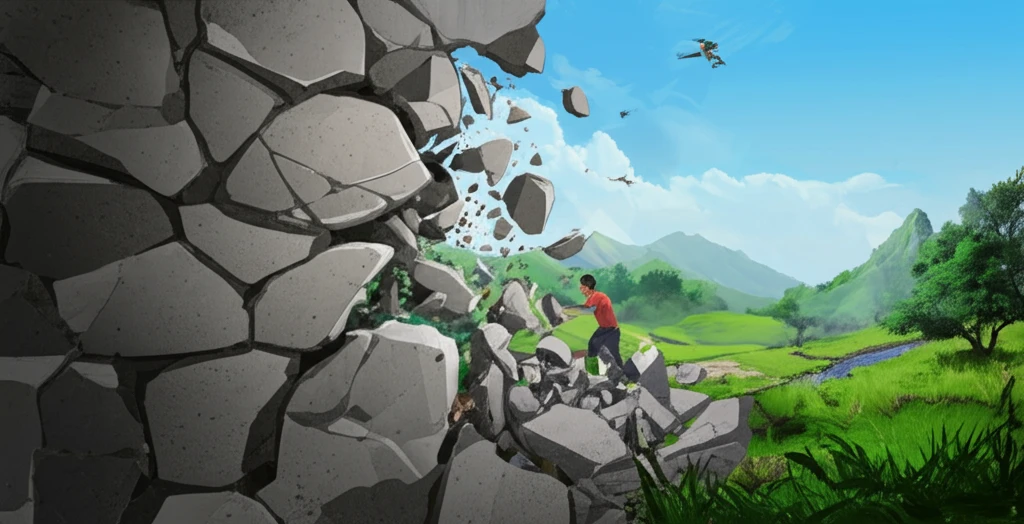
Recycled Aggregate Concrete: Can Crushed Buildings Pave the Way to a Sustainable Future?
"A new study investigates how recycled concrete aggregate could transform construction, making it greener and more resilient."
The construction industry is a behemoth, consuming vast quantities of resources and leaving a significant environmental footprint. Concrete, the world's most widely used construction material, is a major contributor to this impact. Traditional concrete production relies heavily on virgin aggregates, like gravel and crushed stone, which are often extracted from environmentally sensitive areas. The production of cement, a key ingredient in concrete, also releases substantial amounts of carbon dioxide, a greenhouse gas.
However, innovative solutions are emerging to mitigate these environmental concerns. Recycled aggregate concrete (RAC), which incorporates crushed concrete from demolition waste as a substitute for virgin aggregates, is gaining traction as a sustainable alternative. RAC not only reduces the demand for natural resources and minimizes landfill waste, but it also lowers the carbon footprint of construction projects.
A recent study published in the Journal of Materials in Civil Engineering delves into the performance and failure mechanisms of RAC, offering valuable insights into its potential and limitations. By employing advanced numerical modeling techniques, the researchers provide a detailed understanding of how RAC behaves under stress, paving the way for its wider adoption in construction.
What is Recycled Aggregate Concrete and Why Should We Care?

Recycled aggregate concrete (RAC) is produced by crushing and processing concrete from demolished buildings, roads, and other structures. The resulting material, known as recycled concrete aggregate (RCA), is then used as a partial or complete replacement for natural aggregates in new concrete mixes. This process offers a multitude of environmental and economic benefits:
- Resource Conservation: Reduces the need to extract virgin aggregates from quarries and riverbeds, preserving natural landscapes and ecosystems.
- Waste Reduction: Diverts concrete waste from landfills, extending their lifespan and reducing the environmental impact of waste disposal.
- Lower Carbon Footprint: Decreases the energy consumption and carbon emissions associated with aggregate extraction and transportation.
- Cost Savings: Can potentially lower construction costs by reducing the expenses associated with purchasing and transporting virgin aggregates.
The Future of Sustainable Construction is Concrete
The research underscores the potential of RAC as a viable and sustainable alternative to traditional concrete. By providing a deeper understanding of its failure mechanisms and performance characteristics, this study contributes to building confidence in RAC and paving the way for its wider adoption in the construction industry. As we face increasing environmental challenges, embracing innovative solutions like RAC is essential for building a more sustainable and resilient future.
